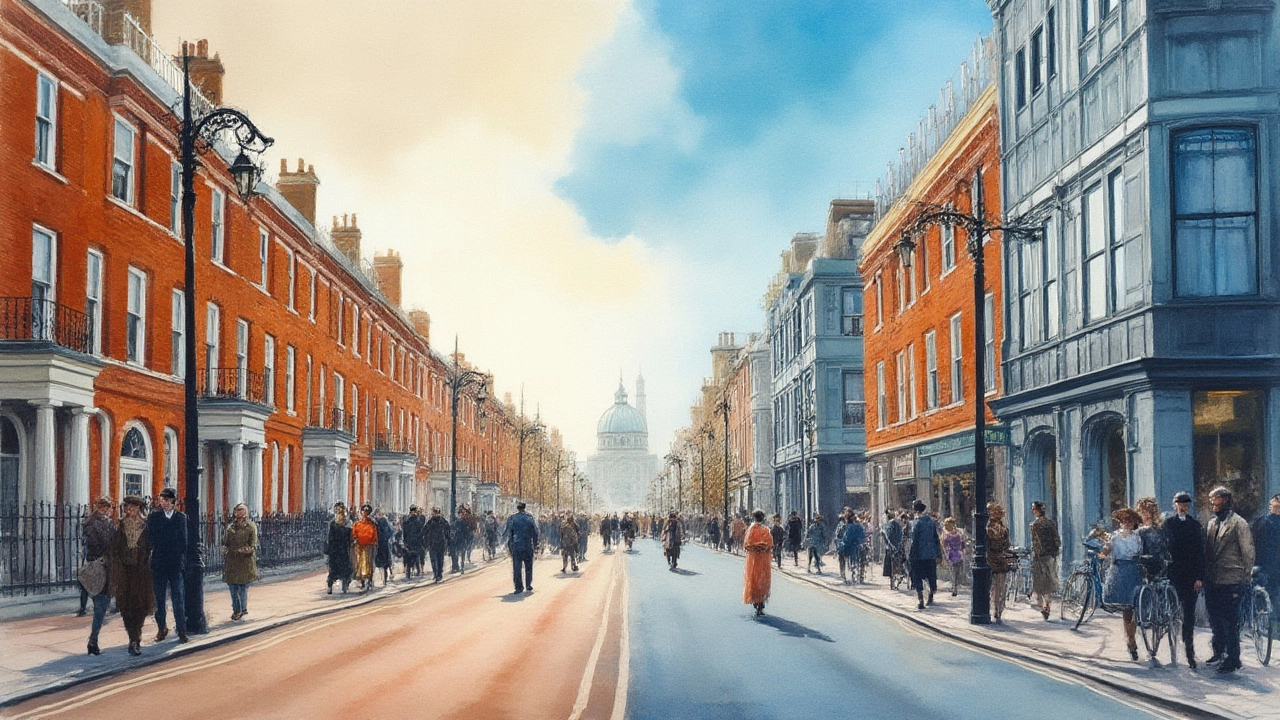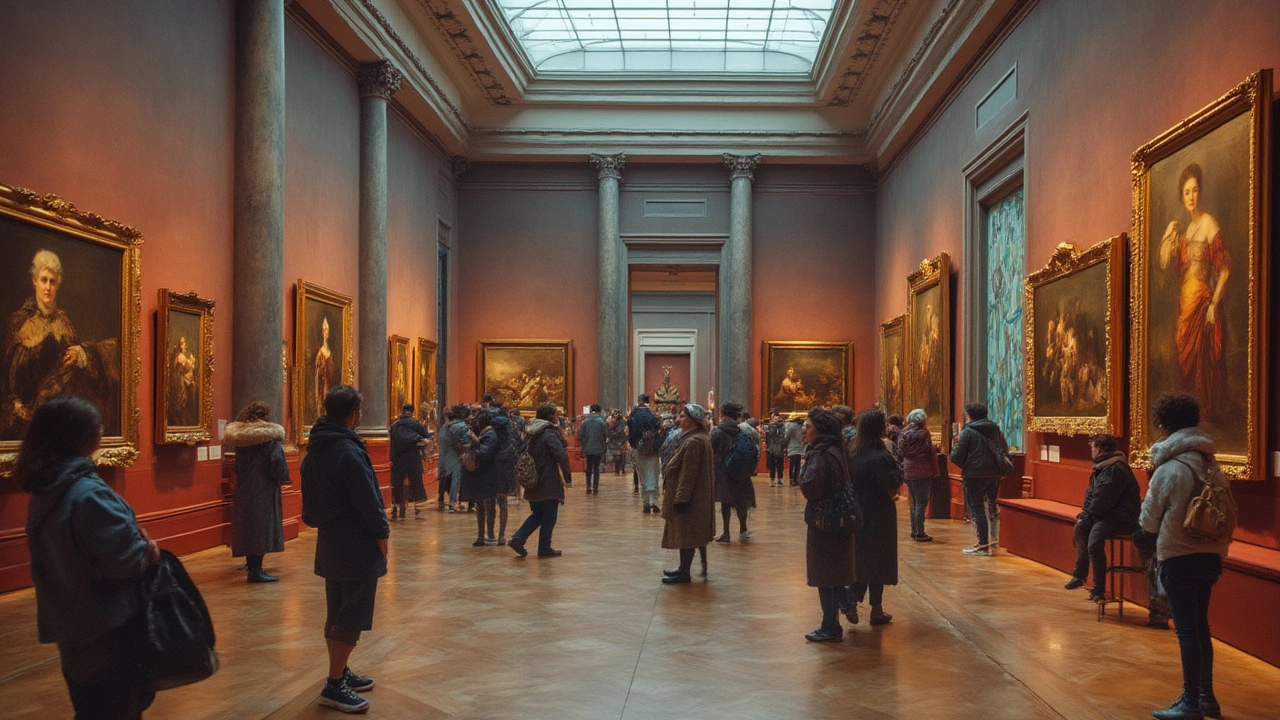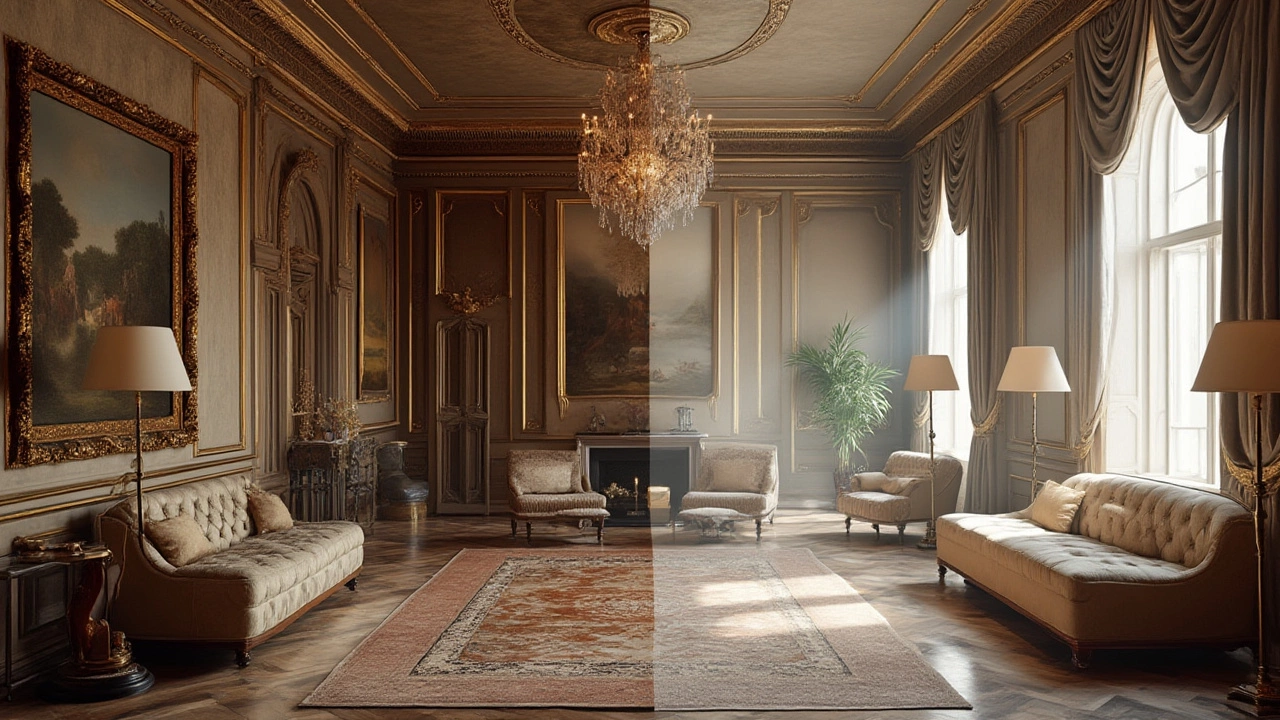If you stand in a room lined with heavy mahogany furniture, crystal chandeliers, and oil paintings of stoic ancestors, you’re experiencing classic style—think Downton Abbey meets your grandmother’s best china collection. Step next door to a place with vast open space, clean lines, and odd light fixtures with names like “Sputnik,” you’ve found contemporary. The clash isn’t just fabric deep—it digs into how we express history, comfort, and even rebellion. It’s a tug-of-war between tradition and ‘now’, and a lot more fascinating than a simple ‘old vs new’ argument.
Foundations of Classic Style: Roots, Ideals, and Timelessness
Classic style carries the weight of centuries and the pride of tradition. Stemming from Greco-Roman principles, it’s obsessed with symmetry, order, and balance. This isn’t just about antiques; classic style has shaped everything from the White House’s columns to the cut of a dinner suit. Its greatest hits include motifs like laurel wreaths, acanthus leaves, and marble busts. Interiors channel richness with heavy wood, carved detailing, and textiles like velvet and silk, while colors like navy, burgundy, and gold set the mood. Why do people still swoon over these elements? Because classic style whispers of stability, old money, and cultivated taste. When Disney’s Cinderella glides down that grand staircase—it’s pure classic style fantasy.
There’s history behind this obsession. The French Louis XVI style, born after 1774, favored straight chair legs and geometric detail, copying ancient Roman examples. Think of the British Georgian period, hot from 1714-1830— symmetry again, with stately woodwork and pastel walls. Even here in Wellington, historic homes loaded with cornices, crown moldings, and old fireplaces ooze classic style. More than décor, it speaks to values: reliability, grandeur, and a respect for what came before. One tip if you want to pull this off at home—don’t mix too many periods. Pick your favorite era, stick to its rules, and add just a hint of modern to keep things fresh. Classic isn’t about time travel; it’s about channeling elegance without feeling stuffy or outdated.
The Anatomy of Contemporary Style: Clean, Bold, Ever-Evolving
Contemporary style, on the other hand, never sits still. If classic is about nostalgia, contemporary screams, ‘What if?’ It was born out of the 1970s but continually updates its look—making it the perfect canvas for new materials, technology, and ideas. Picture spaces with minimal clutter, neutral walls splashed with unexpected bursts of color, and statement pieces that defy old logic. Compare a classic Louis chair to the bold zigzagging shape of a contemporary Zig Zag chair—iconic, but in entirely different ways.
Materials make the biggest difference. While classic style treasures hardwood and stone, contemporary style embraces steel, glass, acrylic, and sustainable innovations like recycled plastics. Open floor plans rule, light pours everywhere, and there’s an almost rebellious refusal to play by old rules. But it’s not cold: warmth comes from textured fabrics, bold art, and plants. Look at today’s Instagram feeds—everyone’s showing off gallery walls of weird abstract paintings, terrazzo countertops, or sculptural lighting made from 3D-printed materials. A 2024 study by Houzz found that nearly 63% of homeowners preferred clean, open spaces and untraditional materials—a clear nod to contemporary taste.
There’s no one right way to pull it off, but there are some hallmarks: embrace spaciousness, simplify your color palette, and find one or two bold items to anchor the room. The key tip? Don’t be afraid to break rules. Unlike classic, contemporary prizes freedom and sees the home as an evolving work in progress rather than a museum.

Comparing Classic and Contemporary: An Honest Head-to-Head
So, what actually separates these two worlds? Break it down, and the difference is everywhere—from architecture to everyday objects. Check out this quick table:
| Feature | Classic Style | Contemporary Style |
|---|---|---|
| Colors | Rich, deep tones (wine, navy, gold) | Neutrals + pops of bold (white, grey, black, lime green) |
| Materials | Wood, stone, silk, velvet | Glass, steel, acrylic, eco-materials |
| Shapes | Ornate, symmetrical, detailed | Sleek, minimal, geometric, asymmetrical |
| Layout | Structured, formal | Open-plan, flexible |
| Decor | Antiques, oil paintings, elaborate frames | Abstract art, minimal decor |
The most striking difference is attitude. Classic style says, “Respect the past.” Contemporary leans in with, “Challenge everything.” That seeps into daily habits too. Classic homes often favor tradition—Sunday dinners, set tables, candles. Contemporary homes, in contrast, might have smart tables that wirelessly charge your phone while you binge Netflix. Yet, both styles can be deeply personal. Mixing them can work—hang an antique portrait above a Perspex side table and suddenly your space tells your unique story.
- If you crave history, warmth, and laid-back grandeur, explore classic elements—think statement mirrors, tufted sofas, and deep color walls.
- If you like change, hate clutter, and want to play with the latest trends, contemporary is your lane—declutter, open up, and give tech a go.
- Don’t marry one forever; style is fluid. Try a classic backdrop with a wild, geometric rug—or anchor a minimalist room with your granddad’s antique clock.
Art, Fashion, and Everyday Life: Where Styles Show Up
Art might be the battle’s biggest playground. Traditional painters—like the old Dutch Masters—spend weeks making oils look straight out of real life. That’s pure classic, honoring ancient skills with impossible detail and drama. Meanwhile, contemporary art’s stars—think Banksy or Yayoi Kusama—chop, splatter, print, and even code their pieces. Their work is often meant to challenge, shock, or just make you pause and think. You’ll even see the split in museums: hang a Rembrandt next to a bunch of blinking LEDs and you’ll see the tug-of-war yourself.
In fashion, classic style looks like tailored suits, wool coats, and brogues—outfits you’ll spot on royals heading to Ascot. Labels like Ralph Lauren and Chanel are textbook classic, with clean lines and fabrics that age well. Swing to the contemporary side, and you’ll see oversized designer hoodies, unisex looks, and sneakers that cost more than your couch. Contemporary fashion loves to subvert expectations. Did you know the chunky sneaker trend borrowed from both 1980s classics and futuristic design? The split isn’t strict—it’s more like a spectrum.
Everyday life shows the tension too. Classic style might mean handwritten invitations on cream card; contemporary, an animated TikTok invite. Even wedding trends tell the tale—lavish vineyards with classic string quartets versus industrial warehouses with neon signs. The real fun starts when you blend the two. Wellington’s own Te Papa Museum isn’t shy about hanging Māori artifacts near modern immersive video art—where tradition and innovation learn from each other.

Mistakes, Myths, and Tips for Mixing Both Worlds
Messing up the mix is easier than you think. Stack too much ornate woodwork next to sleek metal and it can look like a garage sale gone wrong. Go all-in on ultraminimal, and your space might feel sterile or unfinished. But get the balance right, and it’s magic; think exposed brick with velvet armchairs, or a Georgian mirror above a concrete fireplace.
One myth is that classic equals outdated or boring. The truth? Classic pieces last for generations, becoming family heirlooms. A 19th-century oak table might outlive every Scandinavian flat-pack. On the flip, contemporary doesn’t mean everything’s cold and plastic—smart lighting, comfy sectional sofas, and lush plants can make even the most modern spaces feel inviting.
Here’s a tip: let one style dominate and use accents from the other. If you love *classic style*, build your room around one great antique and freshen it with simple lighting or abstract prints. For contemporary fans, keep your base neutral and use a classic item (like an old trunk or vintage lamp) for warmth and history. Use textiles to bridge the divide—patterned rugs, cozy throws, and plush cushions soften any style battle.
Another trick: let the architecture guide you. If you live in a 1920s villa, play up its leadlight windows and wood grains, but don’t be afraid to throw in a modern chair. Apartment in a sleek, glass high-rise? Ground it with a vintage Turkish rug or a couple of quirky flea market finds. And don’t ignore your instincts. If something makes you happy every time you see it, you’ve mixed styles right.





